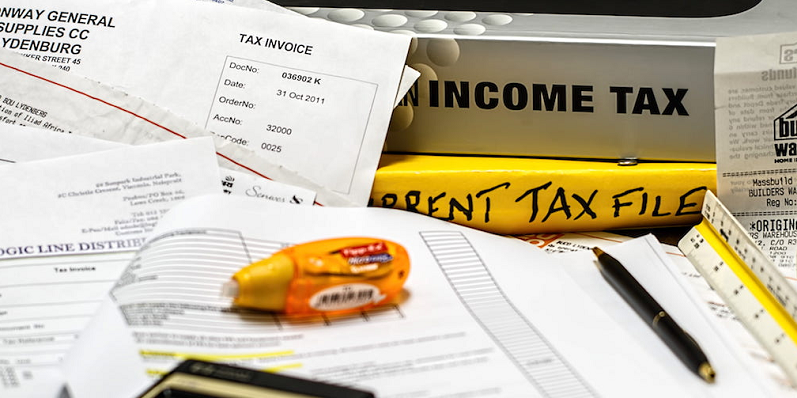
In the dynamic world of business, where every penny counts, savvy entrepreneurs are always on the lookout for ways to minimize their tax liabilities while maximizing their profits. If you’re among the growing number of small business owners who have chosen the S-Corporation structure, you’ve already taken a significant step in the right direction. However, there’s another crucial aspect to consider – tax deductions. Here we explore how S-Corporations can leverage various tax deductions to their advantage.
Contents
- Understanding S-Corporations
- The Role of Taxation in S-Corporations
- Types of Tax Deductions for S-Corporations
- Maximizing Tax Deductions for Your S-Corporation
- References
Understanding S-Corporations
Starting a small business is an exciting endeavor, and one of the crucial decisions you’ll make early on is choosing the right legal structure. Among the options available, the S-Corporation, or S-Corp for short, has become increasingly popular.
Explanation of What an S-Corporation Is
An S-Corporation is a unique type of business entity that combines some of the benefits of both traditional corporations (C-Corps) and partnerships or sole proprietorships. This structure derives its name from Subchapter S of the Internal Revenue Code, which governs its taxation rules.
In essence, an S-Corp is considered a pass-through entity for tax purposes, meaning that the company itself does not pay federal income taxes. Instead, profits and losses “pass through” to the shareholders, who report these on their personal tax returns. This pass-through taxation can result in significant tax advantages, making S-Corps an attractive choice for small business owners [1].
Advantages of Choosing S-Corporation status
- Limited Liability: Like C-Corporations, S-Corporations offer shareholders limited liability protection. This means that in most cases, the personal assets of shareholders are protected from business debts and liabilities.
- Pass-Through Taxation: As previously mentioned, one of the primary advantages of S-Corporations is pass-through taxation. This allows business income to be taxed only at the individual level, potentially leading to lower overall tax liabilities compared to C-Corporations.
- Investor Attraction: S-Corps can attract investors more easily than other pass-through entities like sole proprietorships or partnerships. Investors often prefer the structure and governance of an S-Corp.
- Ownership Flexibility: S-Corporations can have up to 100 shareholders, providing flexibility for growth and expansion while maintaining the benefits of pass-through taxation.
Eligibility Requirements for S-Corporations
While S-Corporations offer numerous benefits, not all businesses are eligible to choose this structure. To qualify as an S-Corp, a business must meet the following requirements:
- Domestic Corporation: The business must be a domestic corporation, meaning it’s incorporated within the United States.
- Limited Number of Shareholders: S-Corporations can have no more than 100 shareholders. Family members can sometimes be counted as one shareholder.
- Eligible Shareholders: Shareholders must be individuals, certain trusts, or estates. Other corporations, partnerships, or non-resident alien shareholders are generally not eligible.
- One Class of Stock: S-Corps can have only one class of stock, which means all shareholders have equal rights regarding distributions and liquidation proceeds.
- Non-Exempt Income: The company’s income must be primarily from its normal business operations and not derived from certain investment activities or passive income sources.

The Role of Taxation in S-Corporations
Understanding the taxation principles that govern S-Corporations is essential for any business owner considering this structure.
Overview of S-Corporation Taxation
S-Corporations are renowned for their tax flexibility and efficiency. Unlike C-Corporations, which face double taxation (corporate and individual), S-Corps enjoy pass-through taxation [2].
Pass-Through Taxation
S-Corporations don’t pay federal income taxes at the entity level. Instead, profits and losses “pass through” to the shareholders. Shareholders report their share of the income or loss on their personal tax returns, and it is taxed at their individual income tax rates.
Avoiding Double Taxation
This pass-through structure helps S-Corps avoid double taxation, where income is taxed at both the corporate and individual levels, a common feature of C-Corporations.
Distribution of Profits
S-Corp shareholders receive a portion of the company’s profits in the form of dividends or distributions. These distributions are generally taxed at a lower rate than ordinary income.
Comparison with Other Business Structures (e.g., LLCs, C-Corporations)
To fully appreciate the advantages of S-Corporation taxation, it’s helpful to compare it to other common business structures:
S-Corporation vs. C-Corporation
- S-Corps have pass-through taxation, while C-Corps face double taxation.
- C-Corps can have unlimited shareholders, whereas S-Corps are limited to 100 shareholders.
- S-Corps are more suitable for small to mid-sized businesses, while C-Corps are often chosen by larger companies.
S-Corporation vs. Limited Liability Company (LLC)
- LLCs also enjoy pass-through taxation.
- LLCs offer more flexibility in profit distribution, while S-Corps must distribute profits according to ownership percentages.
- S-Corps may have more stringent formalities, such as required regular meetings and minutes.
The Pass-through Taxation Concept
The pass-through taxation concept is at the heart of the S-Corporation structure. It offers several advantages, including:
- Simplified Taxation: S-Corps avoid the complexity of corporate tax returns, making tax compliance more straightforward.
- Lower Tax Rates: Shareholders of S-Corps often enjoy lower overall tax rates because they can take advantage of deductions and credits at the individual level.
- Flexibility: Shareholders can use losses from the S-Corp to offset other income, reducing their overall tax liability.

Types of Tax Deductions for S-Corporations
Tax deductions can significantly impact your S-Corporation’s bottom line, reducing your taxable income and ultimately lowering your tax liability [3].
Ordinary and Necessary Business Expenses
Examples and explanations
- Employee salaries and benefits: Deducting wages, health insurance, and retirement plan contributions.
- Rent and lease expenses: Including office space, equipment, or vehicles used for business purposes.
- Office supplies and utilities: Deducting costs for essential supplies, electricity, and internet.
- Marketing and advertising: Expenses related to promoting your business.
- Professional fees: Fees paid to consultants, accountants, or legal advisors.
- Depreciation: Deducting the cost of business assets over time.
Salaries, benefits, and retirement plans
- Exploring the tax advantages of offering competitive salaries and benefits to attract and retain talent.
- How contributing to retirement plans, like a 401(k) or SEP IRA, can reduce taxable income.
Depreciation and Amortization Deductions
How to take advantage of these deductions
- Understanding depreciation methods (e.g., straight-line, accelerated) and their impact on deductions.
- The importance of maintaining accurate records of asset purchases and depreciation schedules.
Home Office Deductions
Eligibility and requirements
- Criteria for claiming a home office deduction for S-Corporation owners and employees.
- Calculating the deductible portion of home-related expenses, such as rent, utilities, and property taxes.
Travel and entertainment deductions
Best practices for record-keeping
- The importance of maintaining detailed records for travel and entertainment expenses.
- Understanding the IRS guidelines for deducting these expenses and avoiding common pitfalls.

Maximizing Tax Deductions for Your S-Corporation
Maximizing your tax benefits can have a significant impact on your S-Corporation’s financial health and profitability [4].
Keeping Thorough Financial Records
Importance of organized records:
- How well-kept financial records simplify the process of identifying deductible expenses.
- Recommended accounting software and tools for tracking expenses.
Documentation of deductible expenses:
- Best practices for storing receipts, invoices, and other supporting documents.
- Establishing a system for categorizing expenses accurately.
Consulting with a Tax Professional
The benefits of professional advice:
- How a certified tax professional can help you identify all eligible deductions.
- Tax planning strategies to optimize deductions for your specific business.
Year-round tax guidance:
- The advantages of seeking ongoing tax advice rather than just during tax season.
- Proactive strategies to minimize tax liabilities throughout the year.
Staying Updated on Tax Laws and Regulations
The impact of changing tax laws on deductions:
- Why it’s crucial to stay informed about evolving tax regulations.
- How new laws or provisions can create opportunities or challenges for your deductions [5].
Compliance with state and local tax rules:
- Understanding how state and local tax laws may differ from federal regulations.
- Ensuring your S-Corporation remains in compliance with all applicable tax laws.
Utilizing Tax Software and Tools
How technology can streamline deductions:
- Overview of tax software and apps designed to simplify expense tracking and reporting.
- Features to look for in tax software to ensure accuracy and efficiency.
Integration with accounting systems:
- The benefits of integrating tax software with your accounting software for seamless data sharing.
- Streamlining the process of generating financial reports for tax purposes.
References
[1] Business Expenses And The S Corporation – What You Really Need To Know
[2] What Can Be Deducted in an S-Corp?
[3] Transaction Tax Deductions and Buying an S Corporation
[4] Learn about Partnership and S Corporation income and deductions
[5] Partnerships and S corps. can deduct state and local taxes
